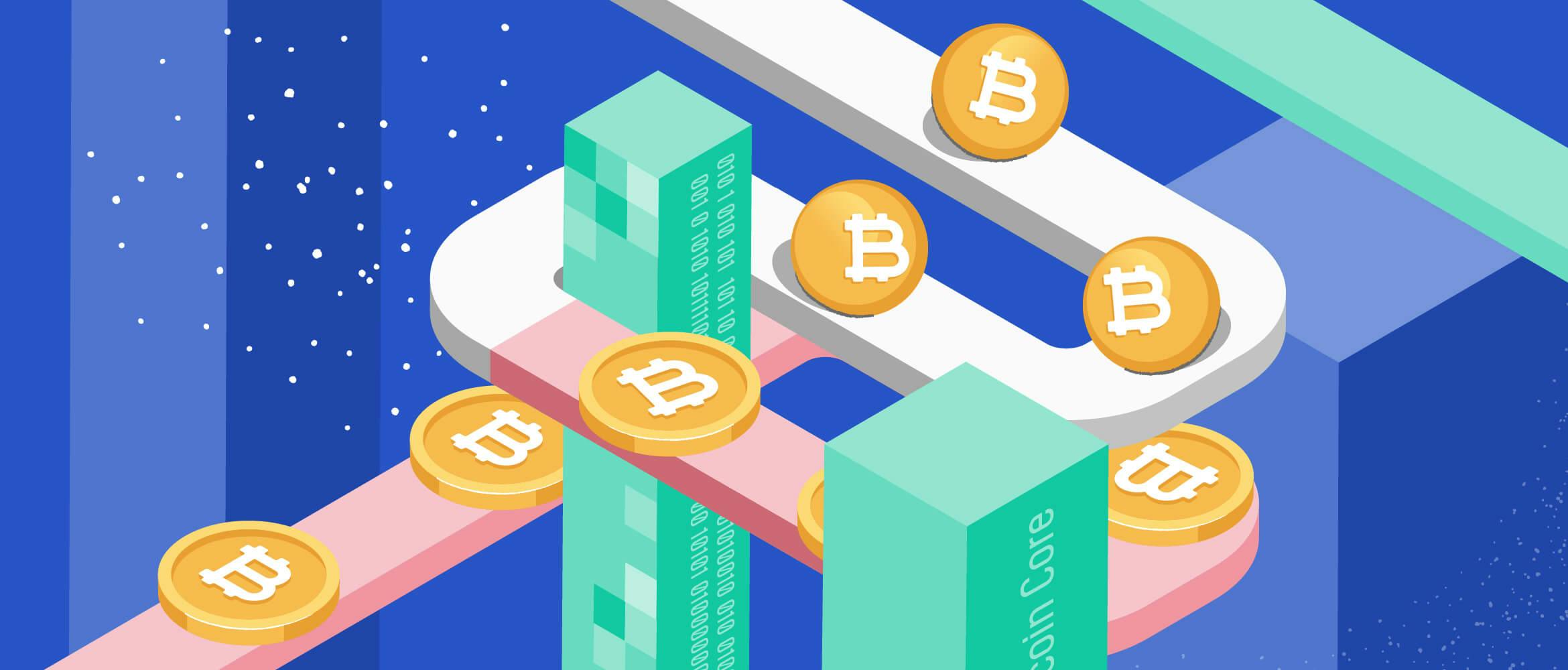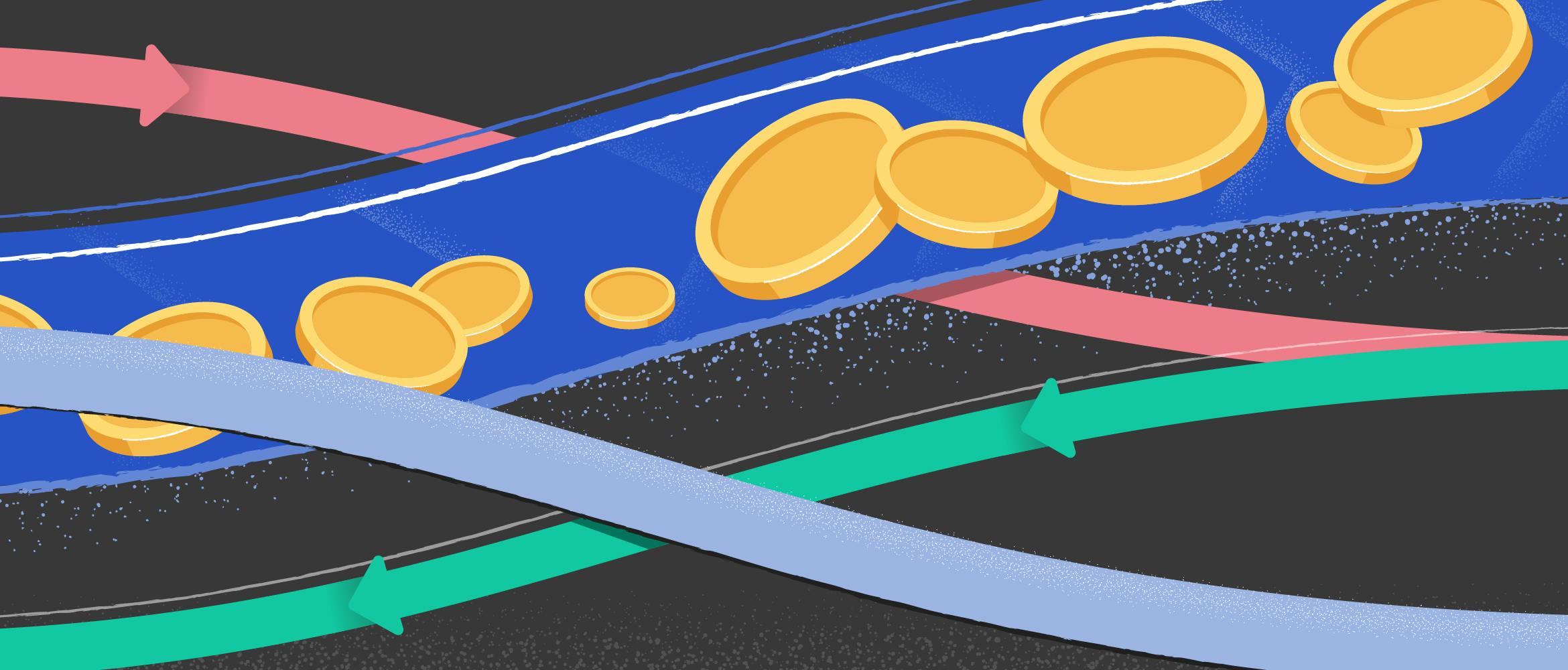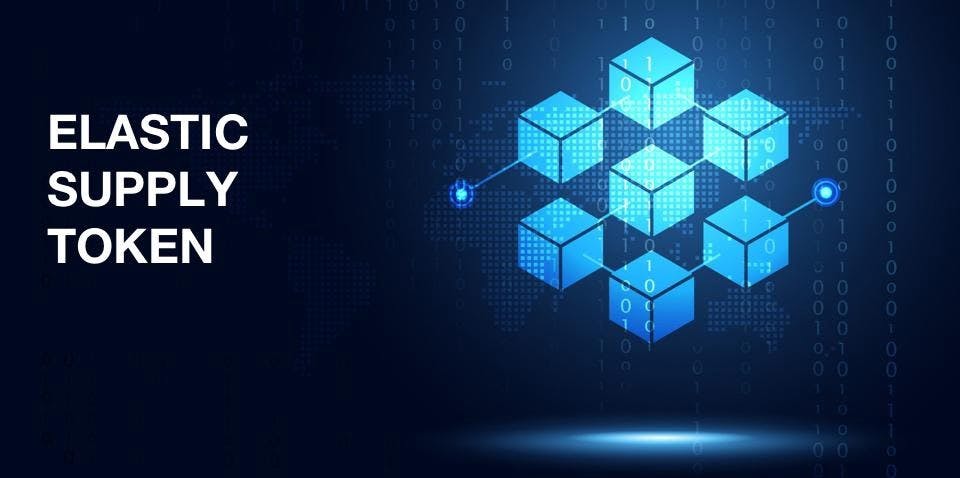
- All
- Analytics
- Technical Analysis
- Trading
- Blockchain
- DeFi
- Guides
- Company News
- Educational
- Opinion
- Price Predictions
- Tools
- Market News
- News
- Trading cases
- Practical guides
- Exchanges
- Trading signals
- Cryptocurrency
- Crypto bots
- Other
Become a crypto master
Learn everything about crypto,
trading and bots

BEP-2
Many users confuse the Binance BEP2 standard with the more popular BEP-20. If you want to catch the difference and understand what is BEP2, this article will help you. Read on to understand what bep2 is used for, where you can store it, and how to issue your own BEP2 tokens. Without further ado, let’s dive in.
Start Trading on 3Commas Today
Get full access to all 3Commas trading tools with free trial period

What is BEP-2?
BEP-2 is a technical standard for issuing tokens on the Binance Chain. It supports a set of specifications that tokens must meet to function successfully in the Binance Chain ecosystem. The set of technical specifications ensures that assets within the ecosystem can interact seamlessly with each other and the surrounding network. A comparable and most-known token standard for issuing tokens on the Ethereum blockchain is called ERC-20.
If you’re not sure what ERC-20 is, make sure to read an article in our academy section.
To put it simply, BEP-2 is rather a set of technical specifications than a piece of software. A pre-designed set of rules ensures that tokens related to some standard can interact smoothly within some chain. For example, BEP2 tokens interact with each other inside the Binance Chain ecosystem. Hence, the BEP2 standard ensures smooth integration for each token and the ecosystem as a whole.
The standard also specifies some features for the tokens issued in Binance Chain. While the BEP2 defines the rules, not every token has to fall under the same use cases. Some tokens may have different implementations for the specific cases they were created for. However, a standard like BEP2 (or any other) help developers to issue token much easier.
BEP2 standard properties
BEP2 is an umbrella term for several tokens. Every BEP-2 related token has the following functions in common:
- Source Address: owner of the specific token.
- Token Name: human-readable, longer-form name of the token. For example, Bitcoin BEP2
- Symbol: a short form of the token's name. For instance, BTCB. Alternatively, the symbol could mean the identifier for the new token issued
- Total Supply: the overall number of tokens issued
- Mintable: function recalls the minting condition. Whether or not tokens can be minter in the future. If so, the total supply of the token increases.
Why BEP2?
Some traders prefer short-term strategies related to BEP2 standard tokens. For example, you can trade BEP2 tokens on Binance decentralized exchange (Binance DeX). Since it runs on top of the Binance Chain, users can trade BEP2 tokens on Binance DeX.
You should keep in mind that the native asset of the whole Binance Chain is BNB. Hence, all fees are charged in BNB, similar to a gas concept within the ETH network. If you want to transfer some BEP2 tokens, you have to pay some amount of BNB tokens. Make sure to transfer some BNBs to your wallet in advance.
If you're not sure about the token, you can always check whether or not it was issued on Binance Chain.
You can store both BNB and BEP2 tokens in many wallets. For example, the most prominent wallets include
- Metamask BEP2
- Trust Wallet
- Ledger Nano X
- Trezor Model T
- Bitquence wallet
BEP2 benefits
Tokens must be compliant with Binance Enhancement Proposition 2 in order to transfer assets on the Binance Chain (BEP2). BEP2 is a collection of rules and specified token management criteria that are used to trigger Binance Chain network assets. Many companies have announced the migration of their tokens or a portion of their tokens from their original core network, ERC-20 or NEP-5 (NEO's own public blockchain token protocol), to BEP2. Even Bitcoin, for which Binance published a tethered version of BEP2 last summer, might benefit from the new blockchain platform's speed, security, and efficiency of transactions. Several stabelcoins, such as TrueUSD and Stable, have given extra value to the network.
Binance Chain uses a combination of Delegated Proof-of-Stake (DPos) and Practical Byzantine Fault Tolerance (pBFT) to determine who will mine each block in Binance Chain. This control mechanism is an alternative to the energy-intensive Proof-of-Work mechanism used by Bitcoin. Many blockchain developers believe that this Tendermint consensus algorithm eliminates many of the downsides aimed at most blockchain-based methods of determining distributed states. Bitcoin, for example, is relatively slow and difficult to scale. In pBFT, not every node within the network requires a direct match to verify the transaction. Hence, dramatically reducing the computational intensity.
BEP2 vs BEP20
Blockchain Binance BNB (BEP-2 format) was launched by Binance in April 2019. Its main purpose is to facilitate fast decentralized trading. Binance Smart Chain BNB (BEP-20 format) can best be described as a blockchain that runs in parallel with the main Binance blockchain.
In contrast to the Binance blockchain, BSC has additional functionality allowing the creation of smart contracts and is compatible with the Ethereum Virtual Machine (EVM). BEP-2 is the standard for tokens in the Binance blockchain, and BEP-20 is the standard for tokens in Binance Smart Chain.
BEP2 token list is quite impressive, considering that the standard doesn’t support dApps or smart contracts. BEP20 and ERC20 tokens are significantly more actively utilized than BEP2 due to the rising popularity of smart contracts and DApps. BEP2 may be of interest to coin pairs traders. The main and spearheading BEP2 token is BNB. Similar to gas fees in ETH, BNB bears the same function within the Binance network.
BEP2 standard won’t allow you to access the vast world of DApps due to its lack of support for smart contracts. Hence, the main confrontation in this regard is between BEP20 and ERC20 token standards.
BEP-20 & BEP-2 Wallets
On TrustWallet, you can create a BEP20 and a BEP2 account, so it would be up to you which one to withdraw to. If you’ve made a Multicoin account, your BEP2 address would be the BNB address on your TrustWallet.
Your BEP20 address would be the coin called "SmartChain," while the BEP2 address would be marked as BNB
- The BEP2 address starts with BNB
- BEP20 address begins with 0x, just like an Ethereum address.
For example, BUSD BEP-2 and BNB BEP-2 address in the Binance blockchain starts with bnb136ns6lfw4zs5hg4n85vdthaad7hq5m4gtkgf23.
In addition, the BEP-2 address requires the use of MEMO, which is not required for replenishment and output to BEP-20 addresses.
The address of the BUSD BEP-20 and BNB BEP-20 on the BSC begins with 0xa6f79B60359f141df90A0C745125B131cAAfFD12.
Binance will give you a prompt based on the recipient address you entered. For example, suppose you enter the address above. In that case, you will see the following message
When withdrawing BNB; the platform will automatically select the BEP-2 network because you specified a wallet address beginning with bnb.
BEP2 Token Wallets
If you want to trade or simply store the BEP2 tokens, you need a reliable wallet. Let’s consider some time-tested options available for you.
Hardware
Ledger BEP2 wallet is one of the best hardware options you can find. For example, if you want to store and trade BNB, you can use both wallets. If you have a rare BEP2 token, make sure to check a wallet’s official website. Another great option is and Trezor wallet. Both wallets support many BEP2 tokens. Make sure to check their websites to find the relevant list of supported tokens.
Online (web wallets)
Binance Chain Wallet is a browser-based wallet in the form of an extension similar in functionality to Metamask but focused on working with BEP2 and BEP20 coins. Quickly installed, it allows you to exchange from one standard to another easily. By default, the wallet only supports BNB, but any other tokens of the listed blockchains can be added and removed manually.
Binance DEX Wallet - a wallet, which the user creates to work with the decentralized platform from Binance. In this case, the keys and the sid-phrase are stored directly with the participant himself. Even Binance cannot help restore the wallet if the user loses the private key, the recovery phrase, or the key file.
Thus, the Binance DEX Wallet can store any assets that are listed on that exchange.
Desktop
Coinomi is one of the oldest multi-currency wallets with a high level of security and hacking protection. There are versions for PC and mobile devices. It supports working with assets placed on almost all existing blockchains (in total - more than 1700 assets). Users can manually add a token of a supported standard, including BEP-2.
Mobile
Trust Wallet — a wallet officially supported by Binance exchange. It gives the ability to buy cryptocurrency from a card or exchange (integrates Binance Dex), storage, sale. Onboard support for decentralized applications, stacking some tokens. The user's personal information is not collected.
Issue BEP2 Token
BEP2 network allows users to issue new tokens using Binance’s official website. If you want to issue a new token, make sure to read through a special Binance Chain GitHub instruction for token developers. If you're going to test some BEP2 token ideas, you can use the Binance Chain testnet.
To create a BEP2 token, you can follow the instructions:
Visit the Binance Mainnet/Testnet home page. Let’s consider Testnet as an example, as seasoned developers already know about the Mainnet.
Click on the Governance button first and proceed to Token Management.
The next step is the Unlock Wallet button.
If you choose Binance Chain wallet, you may or may not have a special Binance browser extension. In case you don’t have it, you’ll see the following message.
Click on the Install Binance Chain Wallet to continue. You can also choose any other wallet option available in the WalletConnect section. Another way to unlock your wallet is a QR code. Click on the “Use original way to unlock.”
You’ll see the following window. Proceed further to choose any option you want.
After successfully getting connected with your wallet, you will be redirected to the token management page.
Click on the yellow "Issue Token" button. Now you should see the page for adding new BEP2 tokens. Fill in all the required information related to your BEP2 token.
- Token Symbol: alphanumeric symbol, the acceptable length is to 3~8 characters
- Token Name: choose any token name under 32 symbols
- Total Supply: enter the total amount of tokens you want to issue
- Mintable: are your tokens inflationary?
BEP2 token supply
If you covered the previous steps, you should see your token in the list. It’s up to you to send some burn, freeze transactions. You can also submit a proposal to get it listed on Binance decentralized exchange.
Submit a Listing Proposal
To submit a listing proposal; you need a minimum of 1005 BNB tokens. Once you have the required minimum, clock on the proposal button and fill in all empty fields. Those fields include title, description, quote asset, initial deposit, price, and voting period.
Bottom Line
BEP2 standard is one of the token standards designed by Binance. The flagship of BEP2 tokens is Binance Coin, called BNB; you can spot the coin in the TOP3 traded crypto worldwide. If you still confuse BEP2 with the BEP20 standard, make sure to read a stand-alone article about BEP20 tokens. If you want to dive into the BEP2 standard details, check out Binance’s official architecture docs.
Conclusion
As of 2023, the world of blockchain and cryptocurrencies has witnessed the birth and growth of various token standards, each serving a distinct role in the broader ecosystem. Among these, Binance's BEP-2 standard stands out, functioning as an essential technical specification for issuing tokens on the Binance Chain. While it might share some semblances with the more commonly recognized Ethereum's ERC-20, they are fundamentally different.
At its core, BEP-2 is not just software but a framework – a well-defined set of technical guidelines ensuring the harmonious interaction of assets within the Binance Chain ecosystem. These stipulations are pivotal, guaranteeing that every token can integrate efficiently and securely within the system.
Several attributes typify BEP-2 tokens. These include their source address, token name, symbol, total supply, and a mintable feature determining future minting conditions. These shared features allow for a consistent experience and expectations across the diverse range of tokens under the BEP-2 umbrella.
One compelling reason for the adoption of BEP-2 tokens is their compatibility with the Binance decentralized exchange (Binance DeX). Trading on this platform is intuitive, although traders must be cognizant of the integral role of Binance Coin (BNB) within the ecosystem, especially concerning transaction fees.
Moreover, storage solutions for BEP-2 tokens are diverse, ranging from hardware wallets like Ledger and Trezor to online solutions like Binance Chain Wallet and desktop and mobile alternatives, ensuring users have a plethora of choices tailored to their specific needs.
The comparison between BEP-2 and BEP-20, a parallel standard, is also noteworthy. While BEP-2 is integral for facilitating decentralized trading on the Binance Chain, BEP-20 provides an expanded scope, enabling smart contract creation and compatibility with the Ethereum Virtual Machine (EVM). The distinctions between these two standards primarily hinge on functionality, with BEP-20 gaining traction due to its support for decentralized applications and smart contracts.
For those inclined towards innovation, the BEP-2 network offers an avenue for issuing new tokens. The process, while detailed, is accessible and is facilitated via the Binance Chain's official tools and resources.
In summary, as we assess the blockchain landscape up to the current year, 2023, it's evident that token standards like BEP-2 have played an instrumental role in shaping the industry's evolution. Their significance goes beyond mere technical jargon, underpinning key functionalities and ensuring the robustness of platforms like Binance Chain. While newer standards like BEP-20 have emerged, BEP-2's relevance remains intact, catering to specific use cases and serving a distinct segment of the blockchain community. As the crypto space continues to evolve, it's crucial to understand and appreciate the nuances of these standards, as they form the backbone of many operations within the ecosystem.

A proven leader, successful at establishing operational excellence and building high-performance teams with a sharp focus on value creation and customer success.






